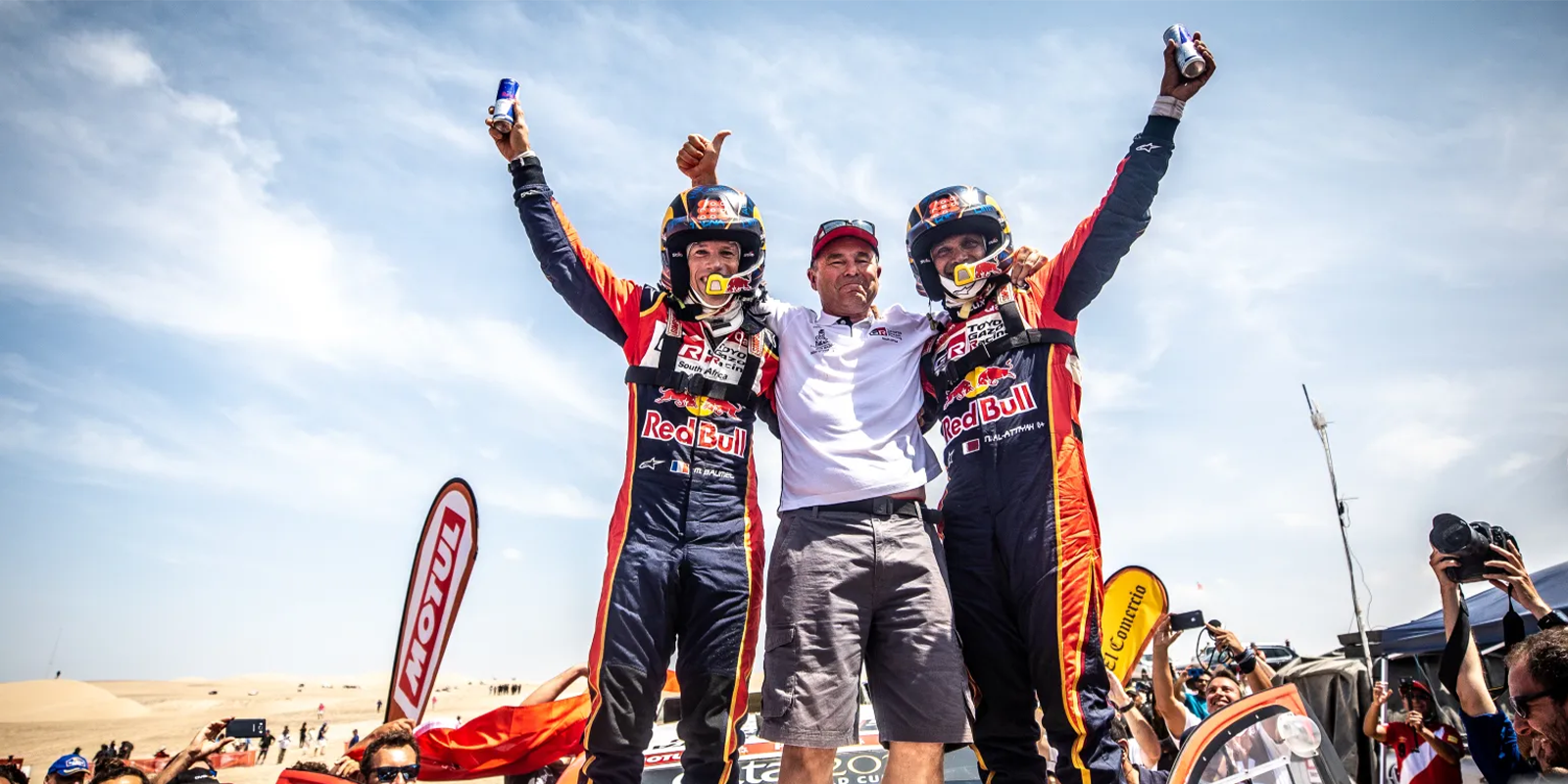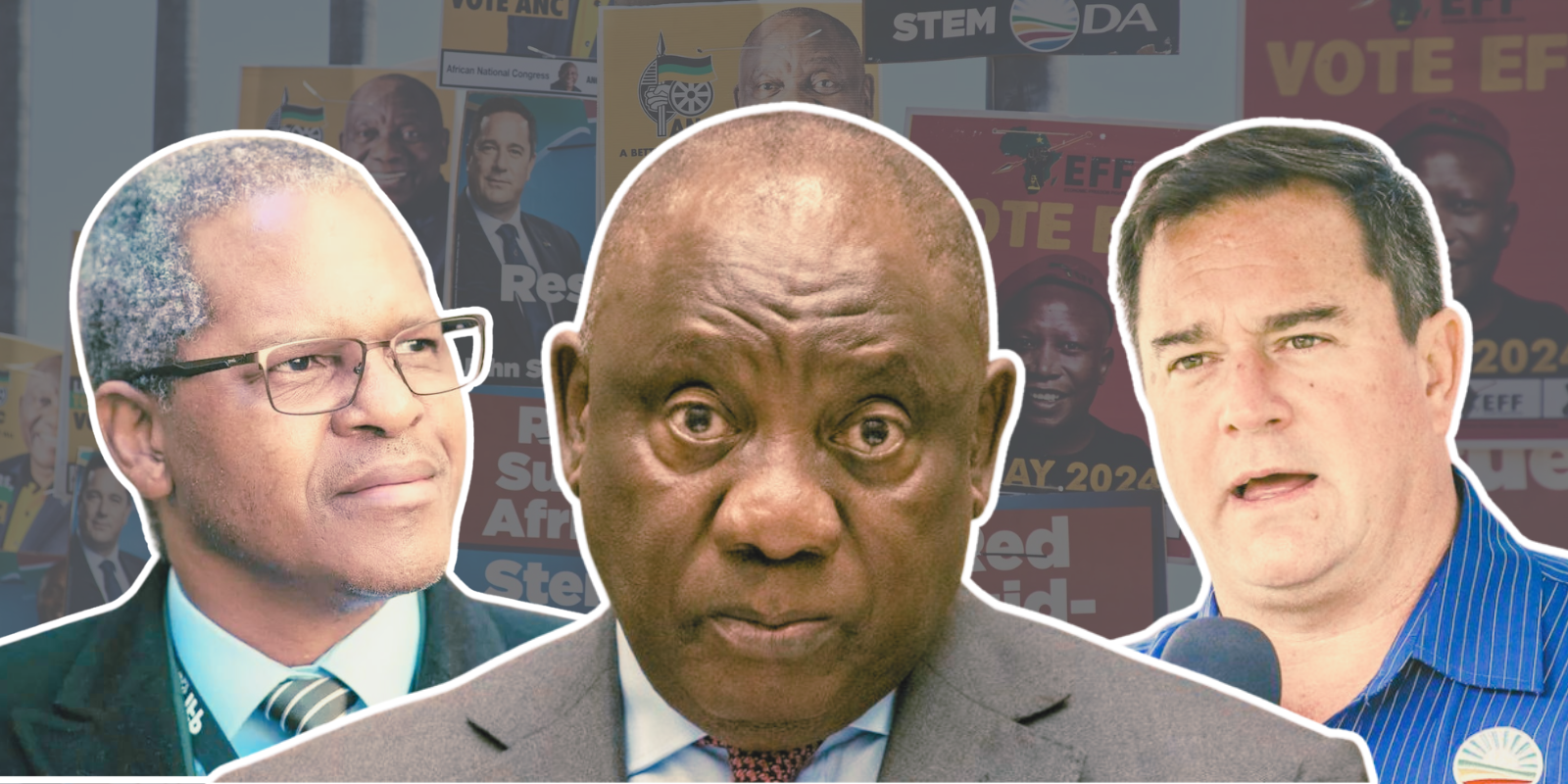News
Glyn Hall: The Unbeatable Fastness of Being
Glyn Hall has spent three decades building up South Africa’s most successful motorsport team and export. Last month, in parallel with Red Bull’s design guru, Adrian Newey, Hall left the team he founded.

In an era when the politically minded like to punt slogans such as “Proudly South African”, the practical reality of succeeding through competitiveness demands being proudly global and proudly diverse. This applies to markets, logistics, technologies, and, at the centre of all of this, the ability of personalities to integrate, innovate and implement.
A month ago, the story broke in the international media of Formula One design expert Adrian Newey’s imminent departure from the all-conquering Red Bull team. Newey’s designs have won 12 constructors and 13 drivers’ championships for three teams with seven different drivers.
An F1 team in the 1970s might have numbered 20 people; in the 1980s, 50 or 60. Today, the large teams are touching 1,500, with more than 100 in just the design office. Ferrari has over 400 people in its engine department alone.
Still, Newey’s talent is regarded as extraordinary in terms of his ability to break down complex problems and seek advantage by interpreting the regulations differently from his peers. It involves the intersection of skills and technologies and places a premium on management.
As Newey himself writes, previously, “every motor racing team effectively had three engineering disciplines: the design and aerodynamics offices, and race engineering… Since then, the industry has mushroomed, and nobody crosses from one department to another. You’ll have, let’s say, 90 people in aerodynamics, another 70 in the design office, and perhaps 30 in race engineering and simulation…”
At the same time as Newey’s resignation, another motorsport figure whose talents have propelled South Africans to global success in the Dakar Rally, Glyn Hall, left the company which he founded in the mid-1990s.
Hallspeed has excelled in preparing track cars for Nissan, and more recently off-road Dakar “rally raiders” for Nissan and Toyota. In doing so, he has worked with global icons in the sport, including world champions Nasser Al-Attiyah, Ari Vatanen, Colin McRae and Fernando Alonso.
More than two dozen national titles have followed, among a range of honours, including three overall Dakar victories and countless podium finishes.
Most of the fame in motorsport is gained by the drivers – the gladiators behind the wheel. But without a sound team behind them providing a car to at least match their talents, they would be nowhere. By doing so, Hall has shown South Africans and the world what is possible.
Born in Stoke-on-Trent, Hall emigrated to South Africa in 1980 after a spell working for the factory Talbot Sunbeam Lotus team. His career is remarkably similar to another largely unheralded South African motorsport engineering talent, Geoff Mortimer.
“Geoff invited me over during the RAC Rally in 1979 where he was watching Tony Pond,” recalls Glyn. Pond is considered the best British rally-driving talent of his generation, whose career peaked during the mid-1980s during the furious Group B era of flame-spitting Audi Quattros, Lancias, Peugeots and the be-winged Metro 6R4, which Pond drove.
“Tony had tremendous respect for Geoff and his ability and thought I would fit in well and that the experience would be good for me at 23 years old. The Talbot team seemed to be full of older people at the time and I felt stifled. I liked Geoff during our short meeting, and soon after he offered me a job in SA in early 1980.”
At the time, Mortimer was running the Chev Dealer Team, racing and rallying highly modified Chevairs which proved capable of beating the ubiquitous Ford Escort, then considered by many to be the best rally car in the world.
When the Dealer Team folded, extinguishing Chevrolet as a racing brand, if not entirely the braaivleis, rugby and sunny skies vibe that went with it – as the advertising jingle of the time had it – Mortimer and Hall were snapped up by Volkswagen.
The contract with VW involved running both the newly launched Golf GTi on the track and the novel four-wheel drive, turbocharged Quattro in the forests, employing the country’s top driver Sarel van der Merwe in the process.
By this time, Glyn had realised some of his own driving ambitions, winning the then Transvaal Rally Championship in a self-built Chevair. It was a career that peaked with a national championship title in 1990 behind the wheel of a Golf.
When Mortimer left VW at the end of the “golden era” of South African rallying to prepare cars for Ford, Hall soon followed to build unique four-wheel drive, Cosworth-engined Lazers, again with Oom Sarel on the driving strength.
At the end of 1992, Glyn stopped driving and started Hallspeed with a contract to build Nissans, the start of the second stage of the Hall story. The Nissan chapter led him to numerous track titles including the last round of the touring car world championship, and forged a partnership with a young driver in Giniel de Villiers, which has seen the Capetonian become a Dakar legend.
Hallspeed migrated offroad with Nissan as the track touring car series wound up, winning his team’s first off-road championship with De Villiers behind the wheel in 2001; this victory marked the start of a period of national domination with Giniel, Duncan Vos, Leroy Poulter, Henk Lategan and Hannes Grobler as leading drivers.
The cars built in Hall’s Midrand premises quickly acquired an international reputation and the South African-based team was soon tasked with preparing cars for Nissan’s Dakar ambitions, driven by Giniel and former world rally champions Colin McRae and Ari Vatanen.
“It’s always challenging taking a driver, like Colin or Fernando Alonso, used to driving flat-out, to succeed in a long-distance event like Dakar. But their natural ability quickly enables them to get into a different rhythm,” says Newey.
Motorsport teaches in this way exceptional life skills.
“It teaches you that if you want to achieve something, you have to work hard at it. Driving a racing car isn’t just about strutting about in overalls; it involves mental and physical preparation, training, working with the engineers, learning how to present and market yourself, how to deal with failure and move on from a bad race, and the self-analysis and determination that is vital for success in almost all walks of life.”
Similar lessons have been instilled throughout Hallspeed’s operations. Like Newey in his design and technical role at Red Bull – albeit on a far more modest personnel and budgetary scale – Hall has been the integrator between different facets: from design to engineering, fabrication and engine building and dyno tuning, sponsorship gathering and corporate liaison, logistics and even testing – all of this on top of running the business and engaging with private customers who help to fund the costs.
By 2010, Hallspeed had switched Japanese sides, moving from Nissan to taking over Toyota’s South African motorsport operation, the third stage in Hall’s career. With Toyota’s Dr Johan van Zyl backing the initiative, Hall and Toyota took the marques to the top step off-road, winning the World Championship in 2021 and 2022.
Under Hall’s guidance, the Dakar Toyotas were prepared by boykies in Gauteng, employing a large dose of boer-making-a-plan endeavour rather than simply the usual motorsport expediency of throwing money at problems. While its sponsorship has been generous by South African standards, it has operated at less than half of the cost of rival European and US-based efforts.
But money is not everything, as the saying goes. While the cars competing with the Dakar Toyotas were mostly bespoke rally specials, Hall has come to be known for his ability to meld a combination of production parts, including the engine, with a bespoke design, like Newey working as closely as possible to just within the letter of the law.

“It’s more evolutionary than revolutionary,” reflects the 68-year-old Hall. Newey agrees: “Evolution is often the key once the spark of a good direction has been set,” says the F1 designer.
Several key factors have influenced Hall’s designs and their performance.
“When we started with off-road vehicles in 2003,” he reflects, “the biggest challenge was with the dampers [shock absorbers], which were rudimentary compared to what we have today. Tyres have also transformed.
“But probably the biggest challenge has been the way in which the rules are written to favour one particular option – diesel for instance – at one time over others.”
This has demanded ongoing liaison with the rule-makers in the FIA. The rules regime has changed in ways that meant his “job has been rather like building a World War 2 airplane; a tubular chassis cloaked by, in our case, carbon-fibre panels.”
Inevitably, politics and personalities play their part in determining the direction of the regulations and the sport, whether this be with the FIA, the international motorsport body, or in the commercial world.
When his mentor Dr Van Zyl died from Covid, Glyn found the politics tougher and is now leaving to – as the saying has it – “pursue other options”.
As Newey has explained in terms of his racing career moves, no one ever enjoys their work, their knowledge and skill – already sorely tested by so many extraneous factors – being edited by others.
Motorsport reminds constantly of a technology marathon absent a finishing line, driven by a hunt for improvement.
Several questions, admits Newey, continue to drive the quest for improvement and success: “How can we improve efficiency? How can we do this differently? How can I do this better?”
John Barnard, another legendary F1 designer, including for McLaren and Ferrari, epitomised the fusion of innovation, accuracy and engineering with an extraordinary focus on problem-solving. But it was recognised that Barnard, the man who brought the carbon-fibre chassis and paddle shift – among other advances – to F1, backed up his engineering standards and inventiveness with outstanding leadership and planning.
Or as Hall puts it: “In this discipline, it’s important to keep looking ahead, for more speed, the next design, the next opportunity.”
This article originally appeared on Daily Maverick.


